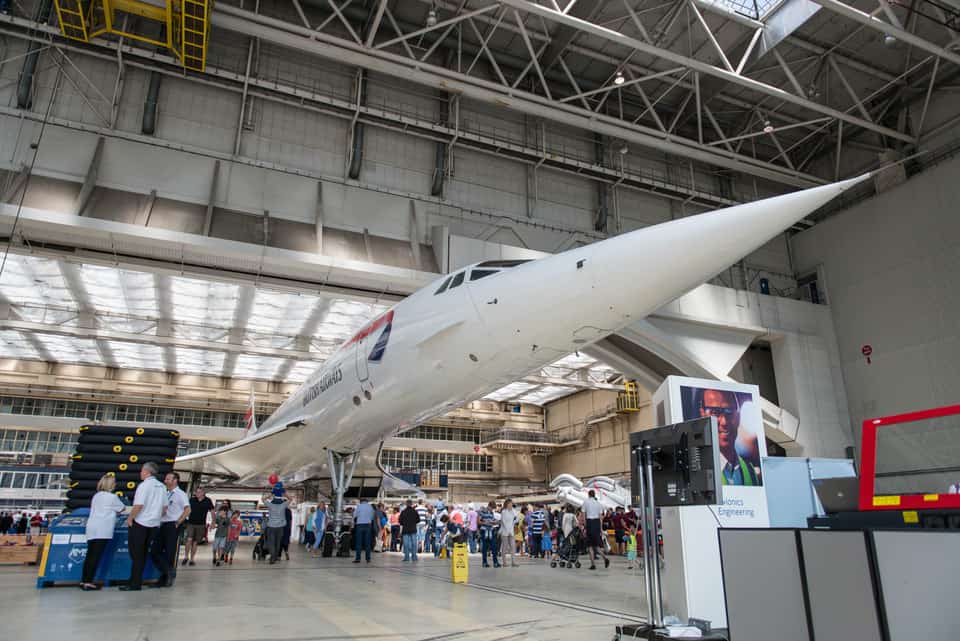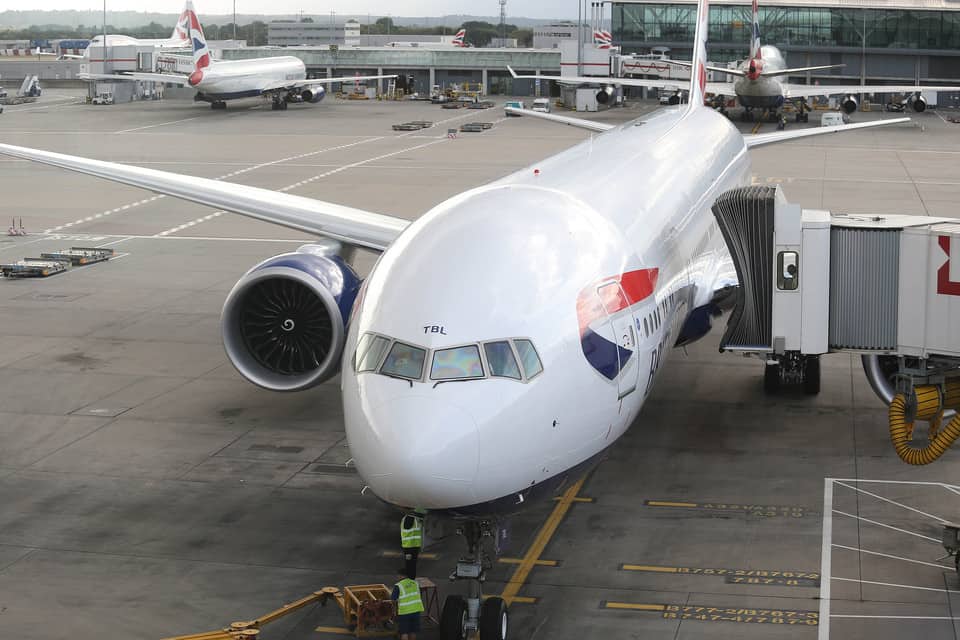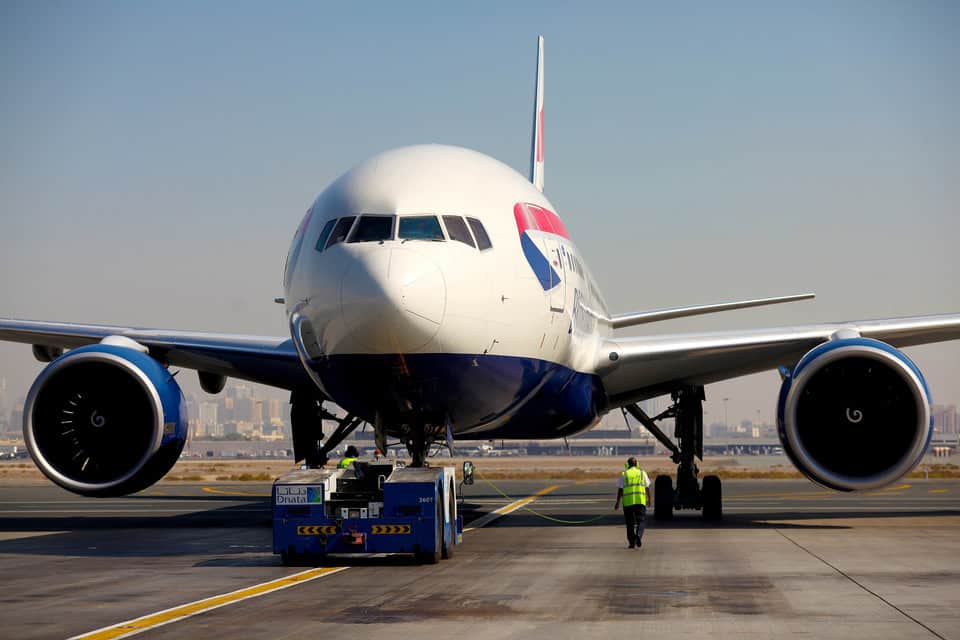
This is what British Airways does and its graduate engineers are required to work with numerous platforms, including one that is officially retired from service.
Concorde was the world’s first supersonic airliner and in January this year it celebrated its 40th anniversary.
Seven Concordes were operated by British Airways, with G-BOAB – aka Alpha Bravo – currently acting as gatekeeper at Heathrow, one of the world’s busiest airports.
She is being kept in tip-top condition by a team of engineers whose work helps to remind us of Concorde’s truly iconic status, one of whom is Scott Falkiner.
The 25-year-old was still at school when Concorde was retired in 2003, but that hasn’t dampened his obvious enthusiasm for working on the Anglo-French record-breaker.
Scott spoke to The Student Engineer about life at BA and the route taken to get there.

Hello Scott. What did you study at university, what motivated you to take that subject and where did you study?
I studied for a Masters Degree in Aeronautical & Aerospace Engineering at the University of Leeds. I chose to study this subject as there is a steady stream of new ideas and innovations, but always with a focus on core engineering principles.
Were you sponsored by BA during your course?
While I wasn’t sponsored by British Airways during my course, I saw an advert for the Engineering Graduate scheme on the airline’s website during the final year of study. I applied to the scheme while I was completing my Masters. It gave me something to aim for during those last few months as deadlines were approaching rapidly, and helped to keep the focus there.
How much relevant work experience did you get under your belt whilst you were studying? What did you gain from that and how did it help you get noticed when applying to BA?
Although I didn’t have any work experience within the airline industry, I was working for a logistics company during my period of study which has some similar aspects to the operation of an airline. It introduced me to working with different parties, each of whom had their own agenda, and I had to work with heavy machinery. I also had to learn how to prioritise work.
There are many airlines in the world, so what made BA stand out to you?
British Airways stands out for many reasons: heritage, variety of work and sheer size of the company to name but a few. Very few places offer the opportunity to work on modern greats such as the “Jumbo Jet” Boeing 747 on one day, and the next day you’d be on the latest and greatest 787-9 or planning for the arrival of the Airbus A350 XWB.
Can you describe what the BA graduate engineering programme is like and what a typical day – if such a thing exists – is like?
The BA Engineering graduate programme is a scheme where, from day one, you get the opportunity to dive deep into a challenge. You can find yourself working on a huge variety of projects: working with the team that is designing the next generation business-class seat; undertaking inspections by walking on the wings of an aircraft in a hangar; crawling in the rear of an RB211 to inspect the reverser sleeve. You also get to experience what it’s like to work with customers at one of the busiest airports in the world and deal with some of the largest OEMs that exist. It’s great that I can contribute to work that really makes a difference.

What are you learning whilst working on the Concorde project? What skills will you be able to take to other platforms?
Working on Concorde has introduced me to people who I never would have met, and allowed me to find out about them and their jobs and how people can all work together. For example, I’ve worked with many engineers and technicians who used to work with Concorde on a daily basis. By talking to them, you gain an understanding of how this iconic aircraft was built and operated - very different to how it’s done today. Finding out about some of the systems Concorde had was particularly interesting – but the most fascinating aspect was learning how the team used novel ideas to get those systems to work. I’ve worked with some very interesting individuals who have been generous in sharing their knowledge – they in turn have enjoyed seeing our reaction to the technology of their day! Being able to pull everyone together from different areas, and all work to achieve the same goal is an extremely useful skill – and it’s a transferable skill, not just suited to this industry.
How did you feel when you found out you’d be working on one of the world's most iconic aircraft?
It was an incredible moment, being told that I’d be working on Concorde. And it’s not just any Concorde – it’s Heathrow’s Gatekeeper. Half the people who pass through the airport every day see that. They get reminded of such a remarkable piece of engineering, and those iconic pointed looks – far from the curves of today’s aircraft. It’s something I thought I would never have the opportunity to do – I had just started high school as Concorde retired. It’s worthwhile knowing that by maintaining Concorde now, future generations will still get the opportunity to see G-BOAB as they fly into or out of the UK's busiest airport – right at the threshold of runway 27L.
What aircraft in BA’s fleet have you worked with already, and which ones do you most look forward to working on?
I’ve worked on the A320 family, A380, 747, 777 and 787. I particularly enjoy working on the 777 as it’s a plane which is into its maturity. But there’s nothing quite like Concorde!
Any tips for aspiring civil aviation engineers? Some ‘dos and don’ts’ maybe?
Be aware that there is a difference between an airline and a manufacturer. It’s the manufacturer that designs and builds the planes, the airline is the one who operates it and ensures that it remains as safe to fly as the day it was delivered. And even though in this industry safety always comes first – there are other aspects to consider – such as aircraft interiors and fitting new technology. Aviation is a very competitive industry and to stay ahead of the pack, British Airways is always looking to ensure its customers’ needs are served. This means that aircraft interiors have to be regularly updated to add features that didn’t exist just a few years ago. Chances are that whatever we add to BA aircraft in the future doesn’t exist yet. Think carefully about which direction you want to head in.
Thanks Scott!
Facts and Stats about Concorde
Concorde was a joint undertaking by the British and French governments; she was designed and built jointly by the British Aircraft Corporation and Aerospatiale
Concorde successfully completed her first supersonic flight on 1 October, 1969 – although the first commercial flights by British Airways to Bahrain and Air France to Rio de Janeiro via Dakar – took place on 21 January 1976
Concorde still holds the record for the fastest crossing of the Atlantic by a civil aircraft (New York to London in two hours 52 minutes, 59 seconds)
She flew up to 11 miles high at the edge of space in the layers between the stratosphere and the ionosphere where the curvature of the earth could be seen
Due to the intense heat of the airframe, Concorde could stretch anywhere from six to 10 inches during flight. Every surface, even the windows, was warm to the touch by the end of the flight.





Swiss geoengineering start-up targets methane removal
No mention whatsoever about the effect of increased methane levels/iron chloride in the ocean on the pH and chemical properties of the ocean - are we...